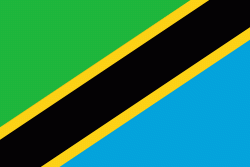Kahama Urban District (Kahama Town)
Kahama Urban District is one of the five districts of the Shinyanga Region of Tanzania. Its administrative centre is the town of Kahama. It is bordered to the north and south by Kahama Rural District, to the east by Nzega District and to the west by Bukombe District.
According to the 2012 Tanzania National Census, the population of the Kahama Urban District was 242,208.
In 2021 President Magufuli promoted Kahama from a town council to a municipal council.
Kahama is now an urban area, declared and publicly known. Its recent development, which are also fascinating, are the result of Isaka dry port and mining activities which have been going on for quite some time now. The town of Kahama now is enjoying the employment from Barrick Gold in the newly operating site of Buzwagi Gold Mine situated in between Kahama and Mwendakulima along Isaka road.
Also manufacturing activities are now part of the town which is already connected to new project of water from Lake Victoria which for decades was one of the problems the people of Kahama were facing. It has now grown to the extent it is connected with Nyihogo, Malunga, Shunu, nyahanga, Igomero nyakato, mbulu, Bukondamoyo, mhungulamwime, which made the urbanized area to grow also.
According to the 2012 Tanzania National Census, the population of the Kahama Urban District was 242,208.
In 2021 President Magufuli promoted Kahama from a town council to a municipal council.
Kahama is now an urban area, declared and publicly known. Its recent development, which are also fascinating, are the result of Isaka dry port and mining activities which have been going on for quite some time now. The town of Kahama now is enjoying the employment from Barrick Gold in the newly operating site of Buzwagi Gold Mine situated in between Kahama and Mwendakulima along Isaka road.
Also manufacturing activities are now part of the town which is already connected to new project of water from Lake Victoria which for decades was one of the problems the people of Kahama were facing. It has now grown to the extent it is connected with Nyihogo, Malunga, Shunu, nyahanga, Igomero nyakato, mbulu, Bukondamoyo, mhungulamwime, which made the urbanized area to grow also.
Map - Kahama Urban District (Kahama Town)
Map
Country - Tanzania
 |
 |
| Flag of Tanzania | |
Many important hominid fossils have been found in Tanzania, such as 6-million-year-old Pliocene hominid fossils. The genus Australopithecus ranged across Africa between 4 and 2 million years ago, and the oldest remains of the genus Homo are found near Lake Olduvai. Following the rise of Homo erectus 1.8 million years ago, humanity spread all over the Old World, and later in the New World and Australia under the species Homo sapiens. H. sapiens also overtook Africa and absorbed the older species of humanity. Later in the Stone and Bronze Age, prehistoric migrations into Tanzania included Southern Cushitic speakers who moved south from present-day Ethiopia; Eastern Cushitic people who moved into Tanzania from north of Lake Turkana about 2,000 and 4,000 years ago; and the Southern Nilotes, including the Datoog, who originated from the present-day South Sudan–Ethiopia border region between 2,900 and 2,400 years ago. These movements took place at about the same time as the settlement of the Mashariki Bantu from West Africa in the Lake Victoria and Lake Tanganyika areas. They subsequently migrated across the rest of Tanzania between 2,300 and 1,700 years ago.
Currency / Language
| ISO | Currency | Symbol | Significant figures |
|---|---|---|---|
| TZS | Tanzanian shilling | Sh | 2 |
| ISO | Language |
|---|---|
| AR | Arabic language |
| EN | English language |















